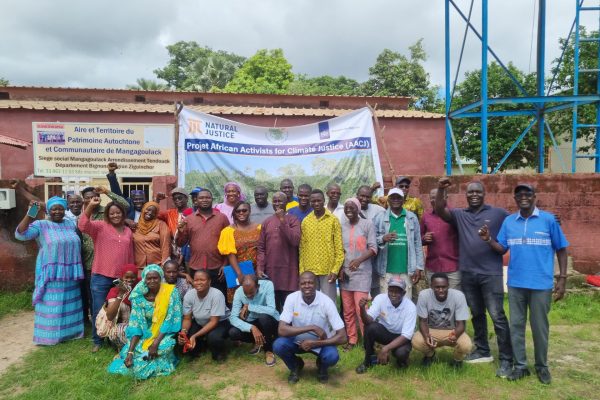How the approach to biodiversity protection is changing in South Africa
South Africa, as a signatory to the Convention of Biological Diversity, is currently on a path towards implementing the biodiversity conservation targets contained in the Kunming-Montreal Global Biodiversity Framework. One way is through changing approaches to conservation to ultimately benefit the livelihoods of communities. The recent introduction of the revised National Biodiversity Economy Strategy is an example of this changing approach. Natural Justice submitted comments on this strategy, which is discussed below.
This week in Nairobi, a team from Natural Justice will be engaged in conversations around the changing model of conservation, which throws open the traditional approaches to include Indigenous and local communities in biodiversity use and protection. This is in alignment with a growing recognition of Indigenous and traditional ways of life that conserve and protect biodiversity.
Submission on proposed National Biodiversity Economy Strategy
The revised National Biodiversity Economy Strategy (NBES) aims to bolster South Africa’s biodiversity sector. It seeks to reform the prevailing conservation paradigm, often criticized as a “fortress conservation model.” The new strategy advocates for a more inclusive approach, promoting landscape-level conservation that integrates communal, private, and state-owned lands, including protected areas.
In the past, South Africa granted wildlife ownership rights to landowners, who have since developed a thriving wildlife-based industry on private lands. Government and private sector entities now share in the responsibility of managing South Africa’s biodiversity assets. While for some, their core business is biodiversity protection, for others there is a profit component to their conservation activities.

Conservation – from exclusion to inclusion
The main critique of this model is the exclusion of the majority of rural South Africans and Indigenous peoples, particularly those living in communal areas, who have no legal ownership over wildlife and biodiversity. This historical approach has also excluded communities from benefitting from the conservation and sustainable use of the biodiversity and wildlife.
Natural Justice’s submission seeks to address these concerns and provides the legal framework for including more inclusive options for benefiting from conservation. The submission recognizes the vital connection between nature’s health and the human rights of indigenous and rural communities.
Our submission highlights the importance of incorporating multiple knowledge systems and community-based management in conservation efforts. It also emphasizes the need for an inclusive and transformative sustainable harvesting strategy for marine fisheries, as well as the development of small-scale sustainable harvesting strategies that address barriers to entry and promote transformative value chains.
Furthermore, the document raises concerns about the lack of clarity around community engagement and equitable benefit sharing in the proposed actions. It stresses the importance of meaningful engagement with local communities and the protection of their rights to land and resources.
Natural Justice also recommends aligning the national biodiversity strategy with global biodiversity frameworks* to ensure synergy with other biodiversity-related agreements. Additionally, it advocates for the prioritization of informed consent and prior consultation with traditional healers and harvesters to protect intellectual property rights. Free, prior and informed consent, which is an international standard, is essential to uphold the rights of Indigenous peoples and local communities.
South Africa has a unique diversity of people and nature. It is lauded for its vast network of protected areas, but the ongoing conflicts and exclusion of local communities is unsustainable. There is an opportunity to benefit its population through adopting a right-based model of conservation, that respects the traditional knowledge of its Indigenous and local communities. The development of community-managed areas will be crucial to this. With climate change leading to even greater biodiversity losses, moving away from the conventional methodologies will be increasingly important as we respond to the biggest threat of our time.
* (1) The Kunming-Montreal Global Biodiversity Framework; (2) The African Convention on the Conservation of Nature and Natural Resources and (3) SADC Regional Biodiversity Strategy







